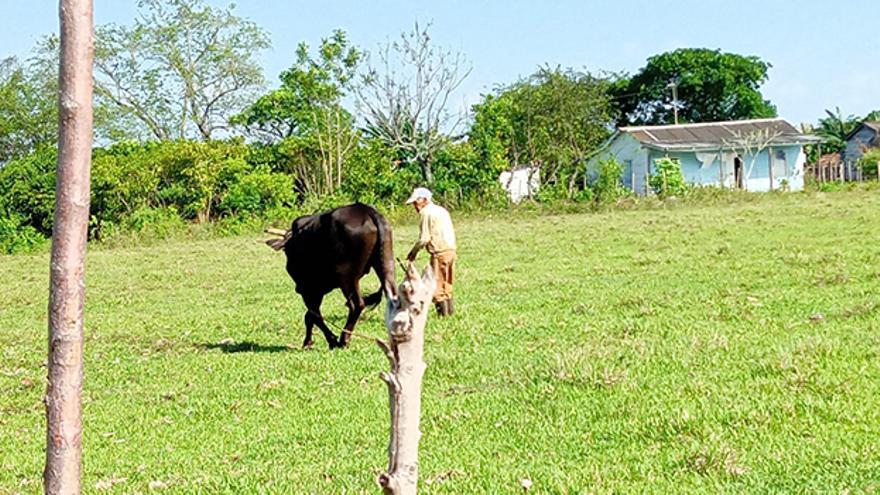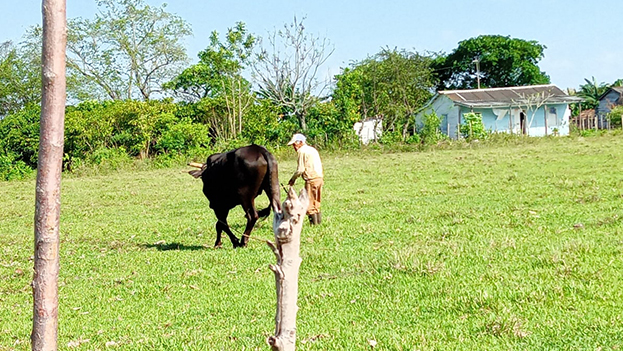
![]() 14ymedio, Yankiel Gutiérrez Faife, Camajuaní (Villa Clara), 19 March 2022 — Rosalía is a rural area in Camajuaní, poor and in decline, like so many small towns in Cuba. This place, full of history, was prosperous thanks to the sugar industry, but today is almost abandoned by its population, despite its good land and cool climate.
14ymedio, Yankiel Gutiérrez Faife, Camajuaní (Villa Clara), 19 March 2022 — Rosalía is a rural area in Camajuaní, poor and in decline, like so many small towns in Cuba. This place, full of history, was prosperous thanks to the sugar industry, but today is almost abandoned by its population, despite its good land and cool climate.
In its best times, the place in the province of Villa Clara had a center for the collection of its production and a railway, with its switch, which today is just ruins; there was an infirmary for small aid, which disappeared and even the primary school has been threatened with disappearance. The place is so small that it only has one road with the occasional bog, which makes it difficult for its citizens to circulate.
Transportation is by family carts and bicycles, but not everyone has one. Years ago there was a public bus with several daily frequencies, but over time it decreased and it only came “when it could.” After the pandemic, it was eliminated and has left residents without any means of transportation.
Every morning some children, young people and adults are seen at the door of the bodega, next to the embankment, hoping that someone driving by will kindly do them the favor of taking them to Taguayabón, the neighboring town, where their schools are and where there is the highway that connects Camajuaní and Remedios.
Elisa is one of those few young women with a bicycle and every day, at 5:00 am, she pedals the four kilometers to reach the highway, where she will board a transport to get to her work as a seamstress.
Like her, there are other women who work in the outskirts and take their children to school by bicycle.

The oblivion in which Rosalía has been left makes many of its inhabitants think of migrating, even four kilometers away, to Taguayabón, where life becomes easier.
Others, despite the shortcomings, are committed to continuing to keep their farms full of crops, cattle, horses, birds or beehives. This is the case of Lele, as his neighbors affectionately call him, a man who has been a beekeeper for 10 years and, between September and November, loads his oxcart with the tools to collect honey.
Lele delivers his product to the State, which will export it to the European market and Rosalía’s honey will end up being sold in a German market at a price that the beekeeper cannot even imagine and of which he receives a minimal part.
Juan, another resident of Rosalía, survives thanks to the small farm inherited from his grandparents and his crops of cassava, peanuts and, sometimes, beans, which help him feed his family and face the widespread shortages on the Island.
In the countryside, products such as oil, which reaches 600 or even 700 pesos when it is found, are even more scarce than in the cities.
Despite all the difficulties, Lele, Elisa and Juan have made the decision to continue with their lives in Rosalía and have resisted the temptation to move to Taguayabón, as many of their neighbors have done in search of services that no longer exist in their little hamlet.
____________
COLLABORATE WITH OUR WORK: The 14ymedio team is committed to practicing serious journalism that reflects Cuba’s reality in all its depth. Thank you for joining us on this long journey. We invite you to continue supporting us by becoming a member of 14ymedio now. Together we can continue transforming journalism in Cuba.
